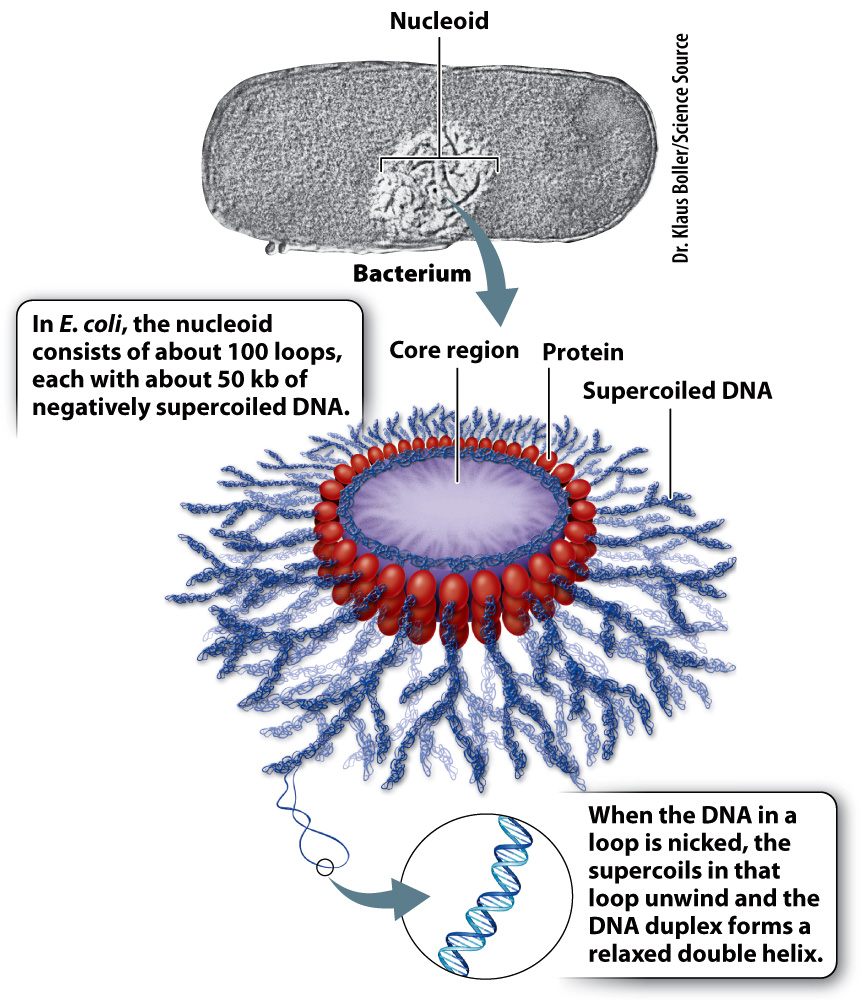Bacterial cells package their DNA as a nucleoid composed of many loops.
Bacterial genomes are circular, and the DNA double helix is underwound, which means that it makes fewer turns in going around the circle than would allow every base in one strand to pair with its partner base in the other strand. Underwinding is caused by an enzyme, topoisomerase II, that breaks the double helix, rotates the ends to unwind the helix, and then seals the break. Underwinding creates strain on the DNA molecule, which is relieved by the formation of supercoils, in which the DNA molecule coils on itself. Supercoiling allows all the base pairs to form, even though the molecule is underwound. (You can make your own supercoil by stretching and twirling the ends of a rubber band, then relaxing the stress slightly to allow the twisted part to form coils around itself. See Fig. 3.12.) Supercoils that result from underwinding are called negative supercoils, and those that result from overwinding are positive supercoils. In most organisms, DNA is negatively supercoiled.
282
In bacteria, the supercoils of DNA form a structure with multiple loops called a nucleoid (Fig. 13.11). The supercoil loops are bound together by proteins. In E. coli, the nucleoid has about 100 loops, each containing about 50 kb of DNA. The protein binding that forms the loops as well as the negative supercoiling of the DNA compress the molecule into a compact volume.
